AUTOMATED MOSAIC GENERATION from CCD frames using the Starlink CCDPACK
package
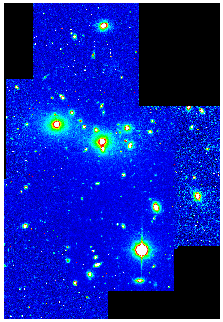
The CCDPACK package
This page illustrates Starlink's ADAM CCDPACK package for reducing CCD
observations.
It demonstrates a suite of programs which allows large numbers of CCD frames
to be aligned, normalised and combined into a mosaic. This permits limitations
on the field size, dynamic range or signal/noise ratio of CCD observations to be
improved very easily.
All of this processing can be performed automatically. The minimum
information required is the set of frames to be combined - this is normally
"wild-carded".
Mosaicing with CCDPACK
Below are artificial CCD frames, created by cutting pieces out of a PDS
micro-densitometer scan of a deep AAT plate of Abell 3158.
The simulated effects of varying sky brightness and atmospheric transparency,
cosmic rays, flat-fielding errors, detector defects, bad columns and photon
noise have all been added.
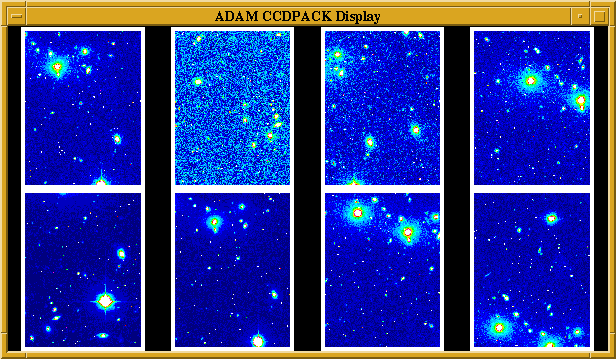
These frames are typical of the reduced output provided by CCDPACK. The
region of sky covered by each frame overlaps slightly. The objects in these
overlap regions will now be used to automatically align them.
The FINDOBJ program looks for brightness peaks in each of these frames. It
also searches for adjacent connected pixels above a threshold value and
identifies these as parts of "objects". The centre of each object is
found accurately by centroiding.
The positions of stars and galaxies have been found and are plotted over the
original data below. They are also saved in disk files, along with brightness
measurements. Note that cosmic rays have been ignored.
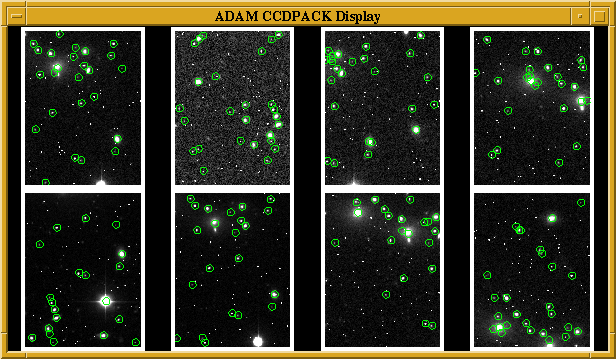
The FINDOFF program can perform pattern-matching between the object positions
on each frame. It assesses the degree of match found between each pair of frames
and assigns it a weight. The best matches are combined to identify corresponding
objects on each frame.
Each object is assigned a number to identify it. These identification numbers
have been plotted over the original data below.
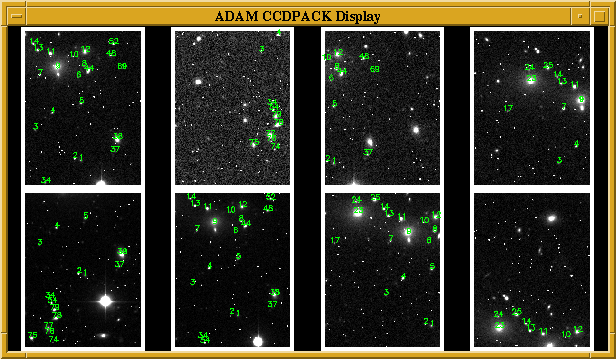
The REGISTER program uses the object identifications and positions to
calculate how far each frame should be shifted to register with the others.
Rejection iterations are performed to eliminate any possible false object
identifications. The frames can then be shifted to bring them into mutual
registration.
The MAKEMOS program combines the aligned frames into a single mosaic by
"median-stacking" them (taking the median pixel value at each point).
This produces a "raw" mosaic showing the frames correctly
registered
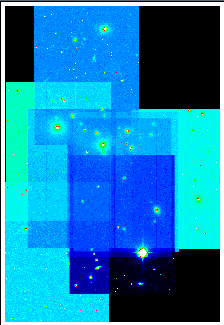
The "raw" mosaic above shows the frames correctly registered, but
the result is not smooth. This is because of changes in sky brightness and
atmospheric transparency (or exposure time) during observation.
We will run MAKEMOS again but this time the program inter-compares frames
where they overlap to determine the relative background level and exposure time.
A set of optimised corrections is calculated which brings all the frames into
the best possible agreement. These are applied, and the mosaic is re-calculated.
The result is displayed below left.
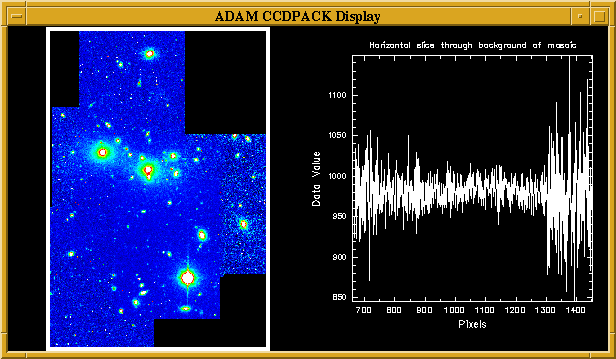
After normalisation, the resulting mosaic is smooth and photometrically
uniform.
At faint levels the edges of the original frames are still visible, although
the background is now smooth. This is because of the varying noise level, as the
slice (shown above right) through the mosaic shows.
The frames have been optimally weighted, so the poor (noisy) exposures have
not degraded the signal/noise ratio of adjacent frames where they overlap.
WWW version by Chris Clayton and Rodney
Warren-Smith (rfws@star.rl.ac.uk)
|